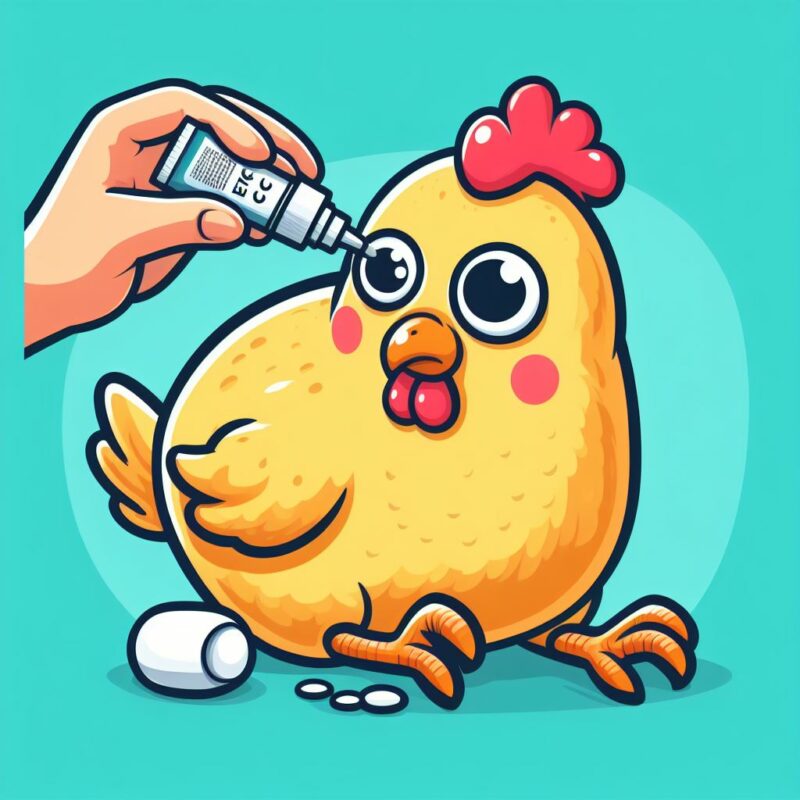
It really doesn’t matter whether it’s trees, plants, people, or chickens; anytime you put too many of the same species in one gathering, the opportunity for a disease to take hold and take off is greater than if those same populations were spread out. That is why we are going to discuss chicken vaccination techniques.
Let’s look into a topic that’s crucial for every backyard flock owner—vaccinations. Just like humans, our feathered friends need their shots to stay healthy and thrive. But did you know that there are various techniques for administering these vaccines? Yep, it’s not a one-size-fits-all deal. This blog post explores the different methods, their pros and cons, and when to use each. So, let’s get started.
The Importance of Proper Vaccination
Disease Prevention
First things first, why do we even need to vaccinate our chickens? Simple—disease prevention. Chickens are susceptible to various illnesses that can decimate your flock if you’re not careful. Vaccines help build immunity, making your birds less likely to catch nasty diseases like Marek’s, Newcastle, and Infectious Bronchitis.
Long-term Health Benefits
Vaccination isn’t just about immediate protection; it’s a long-term investment in your flock’s health. A well-vaccinated chicken is more likely to live a longer, healthier life, which is a win-win for everyone involved.
Impact on Egg and Meat Quality
Healthy chickens produce high-quality eggs and meat. So, if you’re raising your flock for either (or both), vaccinations are a no-brainer. When your birds are well-protected, you’ll notice fewer egg deformities and better meat texture.
Types of Vaccines
Live Vaccines
These vaccines contain a weakened form of the virus. They’re generally easier to administer and offer long-lasting immunity.
Killed or Inactivated Vaccines
These vaccines contain a virus that has been killed or inactivated. They’re often used for more severe diseases that may require booster shots.
Recombinant Vaccines
These are the new kids on the block, using modern biotechnology to provide immunity. They’re highly specific but can be a bit on the pricey side.
Six Chicken Vaccination Techniques
We will now look at six chicken vaccination techniques that can be administered to keep chickens healthy and productive. Each one is explained in a step-by-step way for your convenience.
Wing-web Stab Vaccination
What it is
This method involves a small puncture in the wing web (the flap of skin between the wing feathers) using a special applicator that delivers the vaccine.
When to use it
Wing-web vaccination is often used for diseases like fowlpox and avian encephalomyelitis.
Step-by-step guide
- Restrain the chicken gently.
- Dip the applicator in the vaccine solution.
- Puncture the wing web.
- Release the chicken.
Pros and Cons
Pros: Easy to administer, minimal stress for the bird
Cons: Not suitable for all types of vaccines
Intramuscularly Injected Vaccine
What it is
This involves injecting the vaccine directly into the muscle, usually in the breast or leg.
When to use it
Intramuscular injections are often used for killed or inactivated vaccines.
Step-by-step guide
- Restrain the chicken.
- Locate the injection site.
- Insert the needle and administer the vaccine.
- Release the chicken.
Pros and Cons
Pros: Effective for certain types of vaccines
Cons: Requires more skill, can be stressful for the bird
Subcutaneously Injected Vaccine
What it is
Here, the vaccine is injected just under the skin, usually at the back of the neck.
When to use it
This method is often used for diseases like Infectious Bursal Disease (IBD).
Step-by-step guide
- Restrain the chicken.
- Lift the skin at the back of the neck.
- Insert the needle and administer the vaccine.
- Release the chicken.
Pros and Cons
Pros: Easier to administer than intramuscular injections
Cons: May cause localized swelling
Eyedrop or Intraocular Vaccine

What it is
The eyedrop or intraocular vaccine is administered directly into the chicken’s eye using a dropper.
When to use it
This method is commonly used for vaccines against diseases like Infectious Laryngotracheitis, Infectious Bronchitis, and Newcastle Disease.
Step-by-step guide
- Restrain the chicken gently.
- Hold the dropper above the eye.
- Administer a single drop into the eye.
- Release the chicken.
Pros and Cons
Pros: Quick and easy to administer
Cons: Requires precision, may cause temporary discomfort
Nose Drop or Intranasal Vaccination
What it is
This involves administering the vaccine as a nose drop directly into the chicken’s nostrils.
When to use it
Nose drop vaccines are often used for respiratory diseases like Avian Influenza.
Step-by-step guide
- Restrain the chicken.
- Hold the dropper above the nostrils.
- Administer the nose drops.
- Release the chicken.
Pros and Cons
Pros: Effective for respiratory diseases
Cons: Can be tricky to administer, may cause sneezing
Vent-brush Vaccination
What it is
This method involves applying the vaccine to the vent area using a brush.
When to use it
Vent-brush vaccination is often used for diseases that affect the reproductive system.
Step-by-step guide
- Restrain the chicken.
- Dip the brush in the vaccine.
- Gently brush the vent area.
- Release the chicken.
Pros and Cons
Pros: Effective for specific diseases
Cons: Requires more skill, can be messy
Choosing the Right Vaccination Technique
Factors to consider
- Age of the chicken
- Type of vaccine
- Health condition
Expert recommendations
Always consult your veterinarian for personalized advice tailored to your flock’s needs.
Frequently Asked Questions
- How much should I vaccinate?
Dosage varies by vaccine and age of the chicken. Consult the vaccine instructions or your vet. - How often should I vaccinate?
Some vaccines require booster shots, while others are one-time deals. Again, consult your vet. - What are the signs of a bad reaction to a vaccine?
Swelling, lethargy, and loss of appetite can be signs. If in doubt, consult your vet immediately.
Conclusion
To wrap things up, vaccinations are a critical part of chicken healthcare. From wing-web to vent-brush, each method has its own set of pros and cons. Always consult your veterinarian to tailor a vaccination program that suits your flock’s unique needs. So go ahead, give your chickens the protection they deserve!
Additional Resources
For more information on chicken diseases and how to deal with them, take a look at these great resources.
